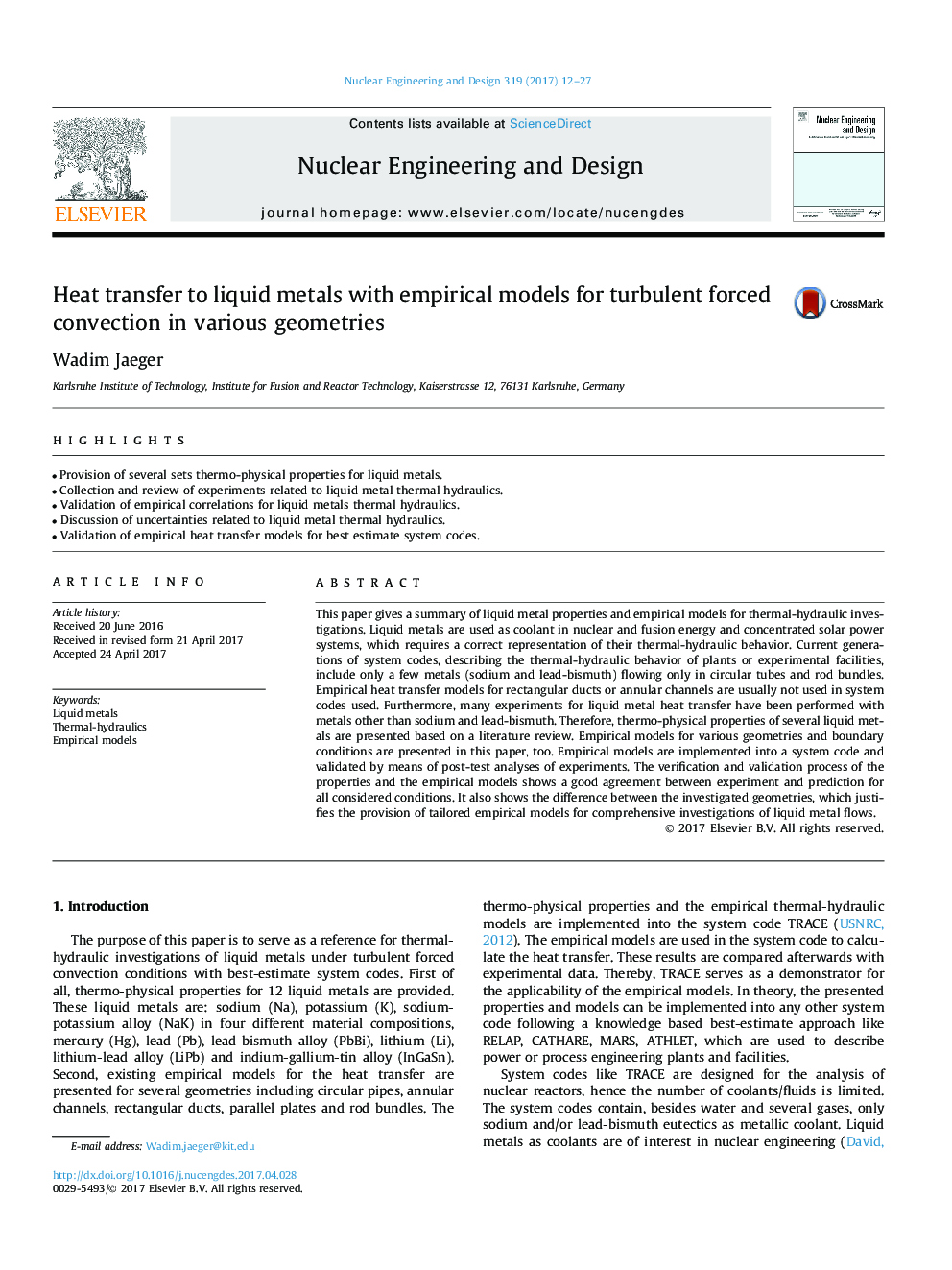| Article ID | Journal | Published Year | Pages | File Type |
|---|---|---|---|---|
| 4925512 | Nuclear Engineering and Design | 2017 | 16 Pages |
Abstract
This paper gives a summary of liquid metal properties and empirical models for thermal-hydraulic investigations. Liquid metals are used as coolant in nuclear and fusion energy and concentrated solar power systems, which requires a correct representation of their thermal-hydraulic behavior. Current generations of system codes, describing the thermal-hydraulic behavior of plants or experimental facilities, include only a few metals (sodium and lead-bismuth) flowing only in circular tubes and rod bundles. Empirical heat transfer models for rectangular ducts or annular channels are usually not used in system codes used. Furthermore, many experiments for liquid metal heat transfer have been performed with metals other than sodium and lead-bismuth. Therefore, thermo-physical properties of several liquid metals are presented based on a literature review. Empirical models for various geometries and boundary conditions are presented in this paper, too. Empirical models are implemented into a system code and validated by means of post-test analyses of experiments. The verification and validation process of the properties and the empirical models shows a good agreement between experiment and prediction for all considered conditions. It also shows the difference between the investigated geometries, which justifies the provision of tailored empirical models for comprehensive investigations of liquid metal flows.
Related Topics
Physical Sciences and Engineering
Energy
Energy Engineering and Power Technology
Authors
Wadim Jaeger,
